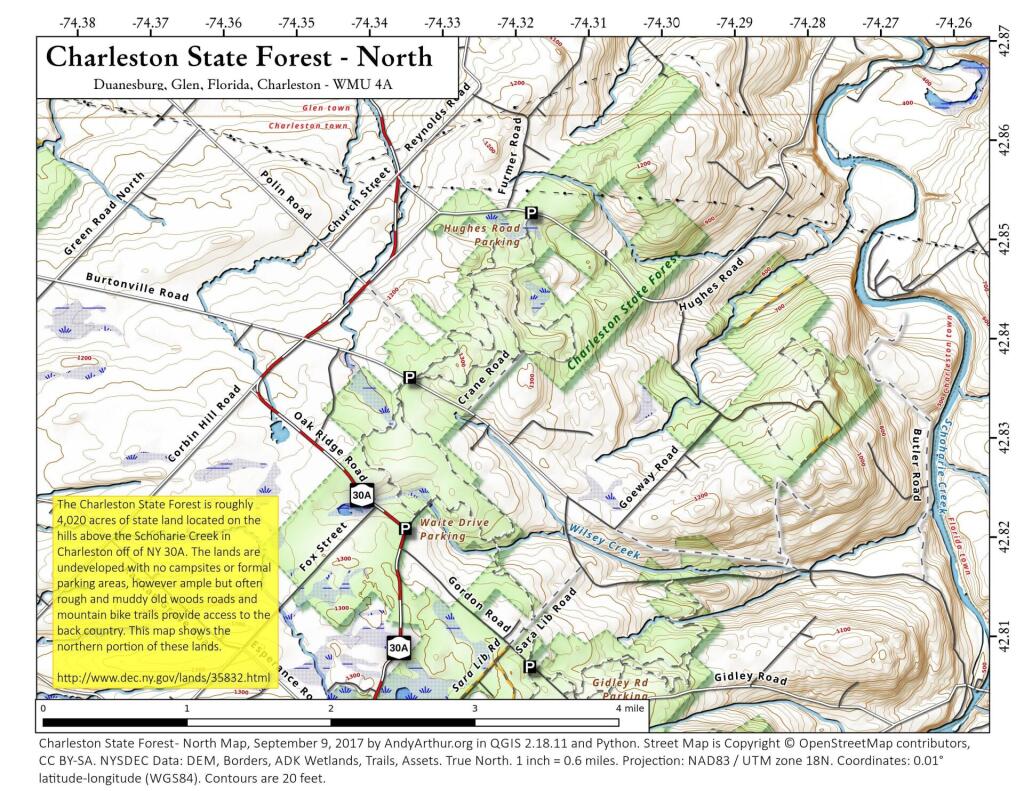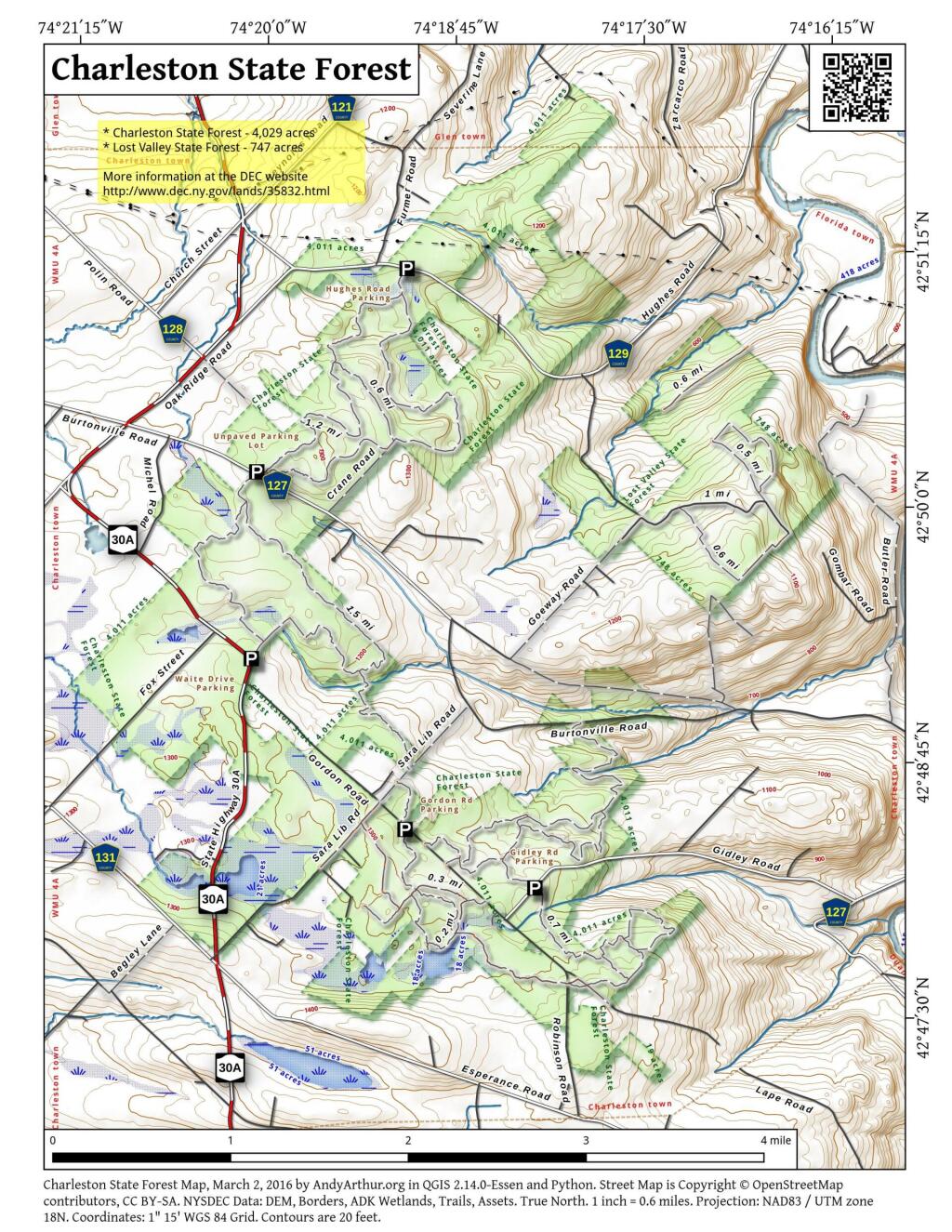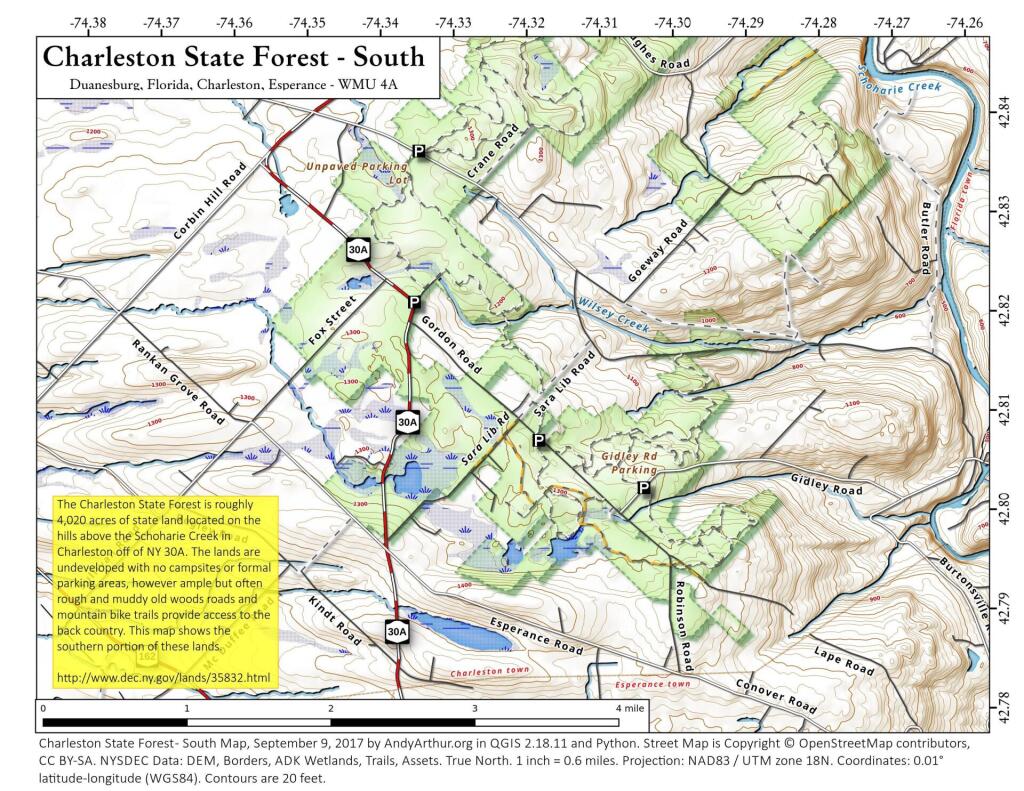Charleston State Forest
The Charleston State Forest and the Rural Grove State Forest contain a large portion of what was called the Clarke Lands. James Clarke, the original grantee, had a three life lease with the tenants on the land. Clarke’s great grandson raised the rent when the three life lease expired. This happened in the 1840’s during the height of the anti-rent wars and resulted in much of the land being abandoned. Rather than leave the houses and barns that they had built intact for Clarke’s great grandson to benefit from, many of the tenants set fire to their homesteads when they abandoned them. The abandoned lands were vacant and unproductive for a long time. The Town of Charleston lost over two thirds of its population between the 1840’s and 1900 (Beers, 1878).
The Warrior Trail is a path running generally north to south through Charleston State Forest near the Waite Drive area. It was said to have been a major access route for Indians to access the coast from the Mohawk River. It was also reportedly used by Johnson’s Raiders in 1780.
The Sara Lib/Gordon Road area was reportedly used as a Tory training ground during the Revolutionary War. While plowing a fire break in the area in the 1950’s, a Revolutionary War Era sword was found in the ground and is still housed in the Charleston Town Historical Society Museum (Whiting, 2004).
Rural Grove State Forest was named after the nearby hamlet of Rural Grove, which had previously been called Leatherville because of the tannin industry present in the area at the time. Rural Grove’s most prominent resident during that time, John Bowdish, suggested the name. Bowdish is given credit as the father of the free school system. He operated a store and post office in the hamlet (Farquhar, 2004).
Yatesville Falls, historically known as Buttermilk Falls, was the site of a gristmill owned by the Vrooman family. General George Washington and his entourage reportedly spent the night at Vrooman’s house in Yatesville (site of present day Randall). Several Mohawk Indian villages are known to have been located near this State Forest. They generally date back to the 1600’s (Marino, 2004).


